GSA Foundation Trustees
Board of Trustee Volunteer Leaders
Lydia Fox
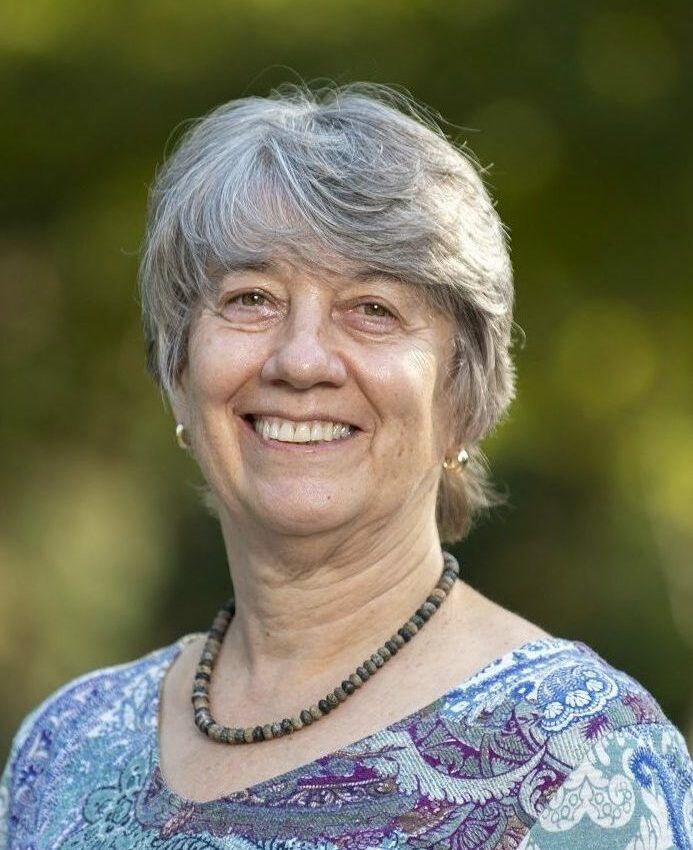
Chair
Lydia Fox
Chair

Lydia Fox is Associate Professor of Geological & Environmental Sciences at University of the Pacific. She is also the Director of Undergraduate Research for the university. Her research is in the area of Mesozoic granites and hydrothermal alteration. She is passionate about teaching and connecting undergraduates to research opportunities. She received Pacific’s Distinguished Faculty Award, the Spanos Distinguished Teaching Award. Lydia received her B.S.E. in geological engineering from Princeton University and her Ph.D. in geological sciences from University of California, Santa Barbara.
Prior to beginning her academic career, Lydia worked as a field engineer for Schlumberger Well Services in Louisiana and as a geologist for the U.S. Geological Survey in Menlo Park. Before joining University of the Pacific in 1990, she taught at California State University, Northridge. At Pacific, she served as department chair from 1998–2014, facilitating the addition of a major in Environmental Sciences. She has been the Director of the interdisciplinary Environmental Studies program since 2004.
Lydia is a Fellow of GSA. She was a member of Project Kaleidoscope Faculty for the 21st Century (PKAL-21) and served as their Scientist-in-Residence in 1996. She is an active member of the Council on Undergraduate Research (CUR), served as the Chair of the CUR Geosciences Divisions (2004–2006), and has served as chair of numerous CUR committees. Lydia is currently the chair of the Field Camp Scholarship Committed for the National Association of Geoscience Teachers (NAGT) and serves on the Executive Committee of the Education Section of the American Geophysical Union (AGU).
Stephen G. Wells
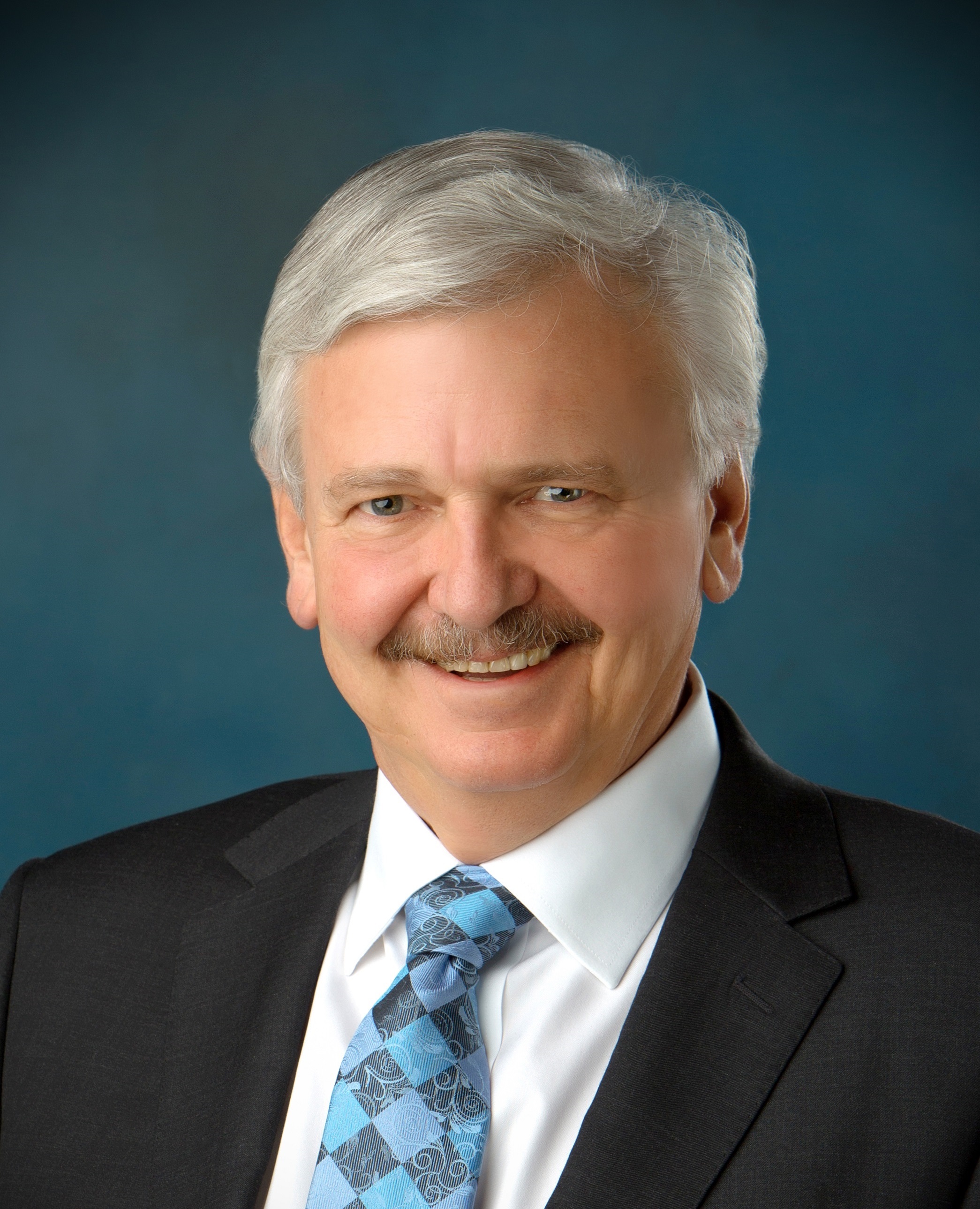
Vice Chair
Stephen G. Wells
Vice Chair

Steve Wells serves as the president of New Mexico Institute of Mining and Technology (New Mexico Tech or NMT), a public academic and research university granting undergraduate and graduate degrees in science, engineering, technology, and mathematics, and reports to the NMT Board of Regents. As president and chief executive officer, Dr. Wells oversees a university with 2150 students and 135 faculty and staff, providing leadership in the execution of the university’s strategic plan and maintaining the budget as allocated by the state legislature along with grants received from various entities. Dr. Wells leads the university in fundraising efforts, as well as cultivating relationships with the NMT alumni to gain support in the advancement and development of NMT activities. Dr. Wells maintains a continuous dialogue with the Board of Regents, providing an annual report on all aspects of the university, as well as providing a voice and presence in the community and state for recruiting potential students.
He served as president of the Desert Research Institute (DRI) of the Nevada System of Higher Education from 1999 to 2016, overseeing one of the world’s largest multidisciplinary environmental research organizations with approximately 500 scientists, technologists, students, and other support staff. He built DRI from a $23.8 million per year operation in 1998 to greater than $50 million currently. He oversaw two research facilities (one in Las Vegas and one in Reno), leading three core divisions and four interdisciplinary science centers that serve the State of Nevada and every continent. Dr. Wells served as a graduate faculty member in the Hydrologic Sciences Program and Department of Geological Sciences at the University of Nevada, Reno. He served on the boards of Research Parks, Ltd., Economic Development Authority of Western Nevada, Las Vegas Global Economic Alliance, WaterStart, Nevada STEM Coalition, and Sierra Nevada College.
Prior to joining DRI in July 1995 as executive director of the Quaternary Sciences Center, Dr. Wells was professor of geomorphology and chair of the graduate program in the Department of Earth Sciences at the University of California, Riverside. Dr. Wells began his academic career at the University of New Mexico in 1976 and ultimately served as chair of the Department of Geology from 1989 to 1991. At both institutions, he built internationally recognized research and graduate programs, matriculating 34 Ph.D. and M.S. students. Dr. Wells has held visiting appointments with the U.S. Air Force Office of Research, U.S. Geological Survey, Los Alamos National Laboratory, and the University of Liverpool, as well as established consulting relationships with numerous federal agencies and private companies including the U.S. Department of Justice and Sandia National Laboratories.
Other professional activities during his career include the following: president, Geological Society of America; GSA Fellow; member of the Board of Earth Sciences and Resources, National Research Council/National Academy of Sciences; presidential lecturer, University of New Mexico; chair and vice chair, GSA Quaternary and Geomorphology Division; panel member, Tectonics Program, Division of Earth Sciences, National Science Foundation; member, U.S. National Committee, International Union for Quaternary Research; associate editor and editorial board member, three international journals; co-chair, U.S. Army Basic Research Review Panel (Atmospheric and Terrestrial Sciences Panel).
Dr. Wells has published approximately 60 peer-reviewed papers and book chapters and edited six volumes. These works focus upon the geomorphology and Quaternary geology of arid and semiarid regions, geomorphic and hydrologic responses to Quaternary climate change, and tectonic and volcanic activity. Dr. Wells’ research career has blended applied studies, such as development of geomorphic criteria for selecting stable uranium tailings disposal areas, and basic research, such as the Late Quaternary paleohydrology of the eastern Mojave River drainage of California. Dr. Wells is the recipient of three national awards for research excellence: the GSA Kirk Bryan Award for best scientific paper in geomorphology and Quaternary geology, the Gladys Cole Award for best scientific proposal in arid land geomorphology, and the GSA Farouk El-Baz Award for desert research.
Dr. Wells has a B.S. (geology) from Indiana University as well as an M.S. and Ph.D. in geology from the University of Cincinnati.
Rex C. Buchanan

Treasurer
Rex C. Buchanan
Treasurer

Rex Buchanan is Director Emeritus of the Kansas Geological Survey (KGS), based at the University of Kansas, and is currently the Director of the Consortium to Study Trends in Seismicity at the KGS. He grew up near Little River, in Rice County, Kansas, on the edge of the Smoky Hills. He started at the KGS in 1978, and was the Interim Director from 2010 to 2016.
He is coauthor of Roadside Kansas: A Guide to Its Geology and Landmarks (rev. edition, 2010) and editor of Kansas Geology: An Introduction to Landscapes, Rocks, Minerals, and Fossils (rev. edition, 2010), both published by the University Press of Kansas, and coauthor of The Canyon Revisited: A Rephotography of the Grand Canyon, 1923–1991, published by the University of Utah Press (1994).
He served as Secretary of the Association of American State Geologists, chair of the GSA Geology and Public Policy Committee, and President of the Kansas Association for Conservation and Environmental Education (KACEE), the Kansas Academy of Science, and the Association of Earth Science Editors. He chaired the Kansas Task Force on Induced Seismicity from 2013 to 2016. In 2008, he was named a GSA Fellow and in 2016 received GSA’s Public Service Award. In 2009, he was given the John Strickler award for environmental education from KACEE. He also provides occasional commentaries on Kansas Public Radio. He has an undergraduate degree from Kansas Wesleyan University and graduate degrees from the University of Wisconsin–Madison.
George Davis
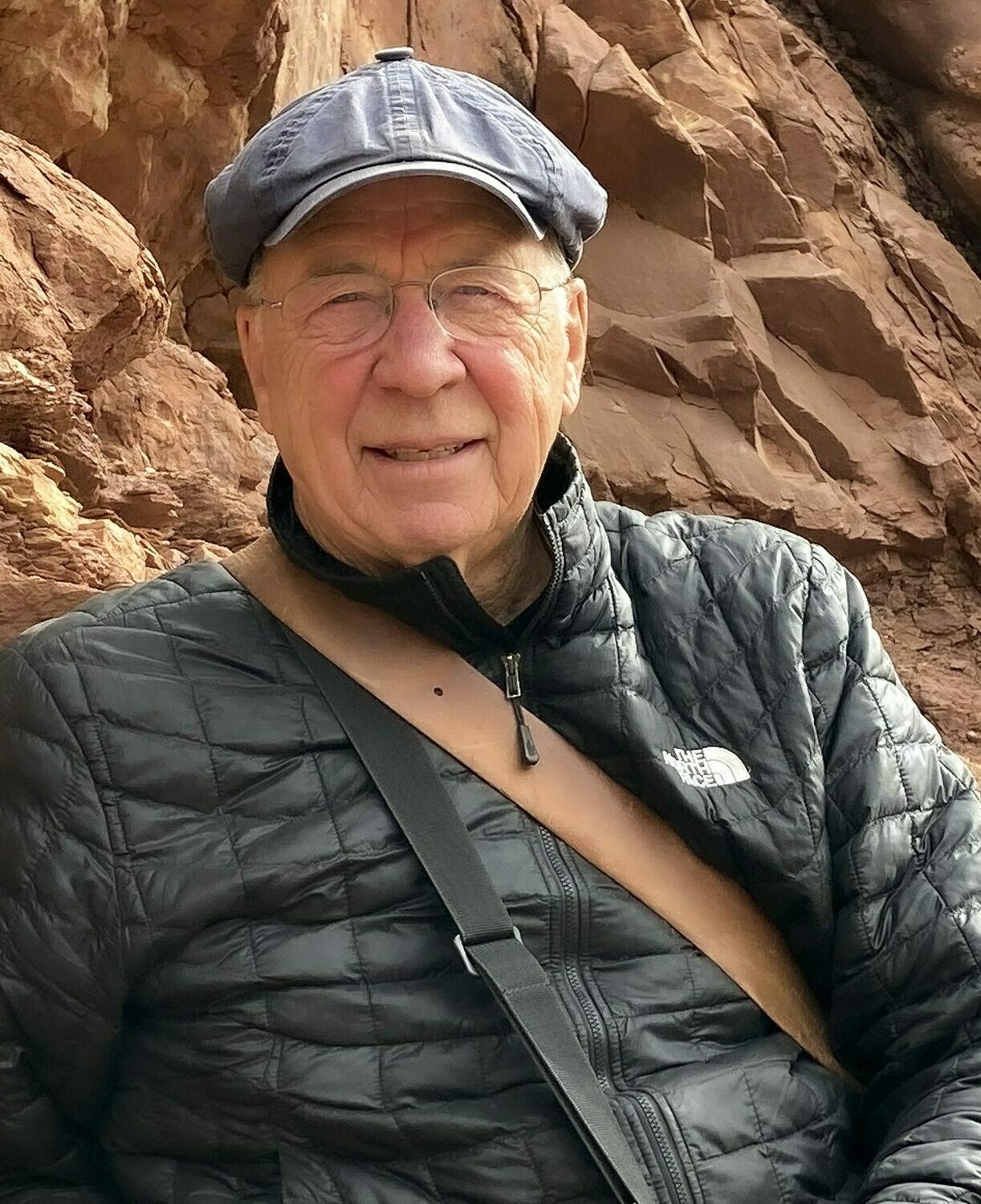
At-Large
George Davis
At-Large

George Davis is Regents Professor Emeritus and Provost Emeritus at The University of Arizona. He is a field-oriented structural geologist whose main focus has been on the tectonics of the Basin & Range and Colorado Plateau. In addition, since 2004, he has been carrying out tectonic and geoarchaeological research in Greece at the Sanctuary of Zeus, Mt. Lykaion, in the Peloponnese. George has been the major research advisor for ~45 MS and PhD students, ~25 undergraduate majors, and has served on research committees for ~125 graduate students. His reach as a teacher has been extended through 3 editions of his textbook, Structural Geology of Rocks and Regions. George joined the faculty of the Department of Geosciences at The University of Arizona in 1970, and over the years held a number of academic leadership positions, including Department Head (1982–1986), Vice Provost (1986–1989), Executive on Loan to the Arizona Board of Regents (1988-89), Acting Vice President for Business Affairs (1989–1990), and Executive Vice President and Provost (2000–2007). In addition, George was President of the University of Vermont (1990–1992).
George received his BA degree from The College of Wooster, Ohio, subsequently receiving his MA degree from The University of Texas, Austin, and his PhD degree from The University of Michigan. Carleton College awarded him an Honorary Doctoral Degree in 2012. George’s honors, awards, and professional leadership contributions include Lindgren Citation Award for Excellence in Research (Society for Economic Geologists) (1971); GSA Fellow (1980); being named on 50th anniversary of Rackham Graduate School among The University of Michigan’s 100 most distinguished Ph.D. recipients (1988); UA Faculty of Science Distinguished Teaching Award (1985); American Association of Petroleum Geologists Distinguished Lecturer (1998–1999); UA Geosciences Outstanding Faculty Award (2002); Chair of National Science Foundation’s Advisory Committee on Atmospheric, Earth, and Ocean Sciences (2006–2009); Peter W. Likins Inclusive Excellence Award (2007); Career Contribution Award in the Structure-Tectonics Division of the Geological Society of America (2011); President of the Geological Society of America (2012); National Recipient of the Inspire Integrity Award conferred by the National Society of Collegiate Scholars (2012); and Distinguished Alumni Award from The College of Wooster (2016). With respect to GSA leadership experiences, he is most proud of helping to initiate On To the Future (OTF), and the J. David Lowell Field Camp Scholarship Program, both of which are significant priorities of GSAF.
Katy Sementelli

At-Large
Katy Sementelli
At-Large

Katy Sementelli is a petroleum geoscientist with Woodside Energy. Katy has over 20 years of experience across the globe in various scales of the upstream business. Her areas of expertise include sequence stratigraphy, clastic sedimentology, and clastic reservoir characterization. Katy is from Erie, PA, and earned a Bachelor of Science from Edinboro University of Pennsylvania in 2000. Katy then embarked in the move south to University of North Carolina at Chapel Hill and completed a Master’s of Geological Sciences studying seismic sequence stratigraphy. Moving further south, Katy started her career in oil & gas in Houston, TX, and has worked for ExxonMobil, Apache Corporation, Hess, BHP and now Woodside Energy. Katy has worked to explore and develop hydrocarbon resources in onshore and offshore basins in North America, South America, and Africa. In her years as petroleum geoscientist, Katy has held many roles and responsibilities. Her favorite roles include mentor, teacher, recruiter, and subject matter expert in clastic reservoir characterization. She has contributed to numerous conferences and scientific publications as a reviewer, an editor, a panellist, a technical coordinator, and other roles supporting the geoscience community. Katy has a passion for inclusion and diversity in the petroleum industry and geosciences. She is currently lead for Woodside Energy’s Houston-based LGBTQ+ PRIDE group. Katy enjoys visiting outcrops all over the world and has helped teach field-based training in areas such as Montana, California, and Utah. Although Katy has seen geology around the world, her favorite geologic feature remains as the Presque Isle State Park sand spit in Erie, PA. She recommends visiting in mid-Autumn for the spectacular foliage and views of the pristine lagoons. Katy is mother, a wife, an avid endurance triathlete, a guide for visually impaired athletes and is a yoga-instructor-in-training.
Braimah Apambire
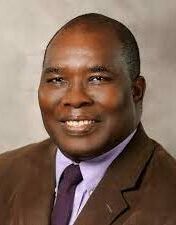
Braimah Apambire

Braimah Apambire
Senior Assistant to the President for Global Sustainability and Director of the Center for International Water Sustainability, Desert Research Institute
(Biographical sketch to come)
Terry Briggs

Terry Briggs

Terry Briggs is Chief Development Officer at AngloGold Ashanti, a global gold exploration and production company with operations in Africa, Australia, and the Americas. As part of his role, he overseas the growth arms of the company including business development, strategic planning, and exploration. Terry has worked in the mineral resource sector for 25 years: he was based at a series of base and precious metal exploration and mining projects across Australia, Eastern Europe, and SE Asia in a series of geoscience and operations management roles, before relocating to the United States where he spent 13 years in various corporate roles with Newmont Mining Corporation prior to joining AngloGold Ashanti.
Terry received his Bachelor of Science with first class honors in Geology from Monash University and a Master’s in Engineering Management from the University of Colorado, Boulder. He is well published through a series of papers that have focused on practical applications of geosciences in the resource sector. Terry has been a passionate participant and supporter of the GSA GeoCareers stream at the Annual Meetings and advocate for the GSA On To the Future program, and is keen to see continued diversity and inclusion programs that advocate for the next generation of geoscientists.
Rebecca Caldwell
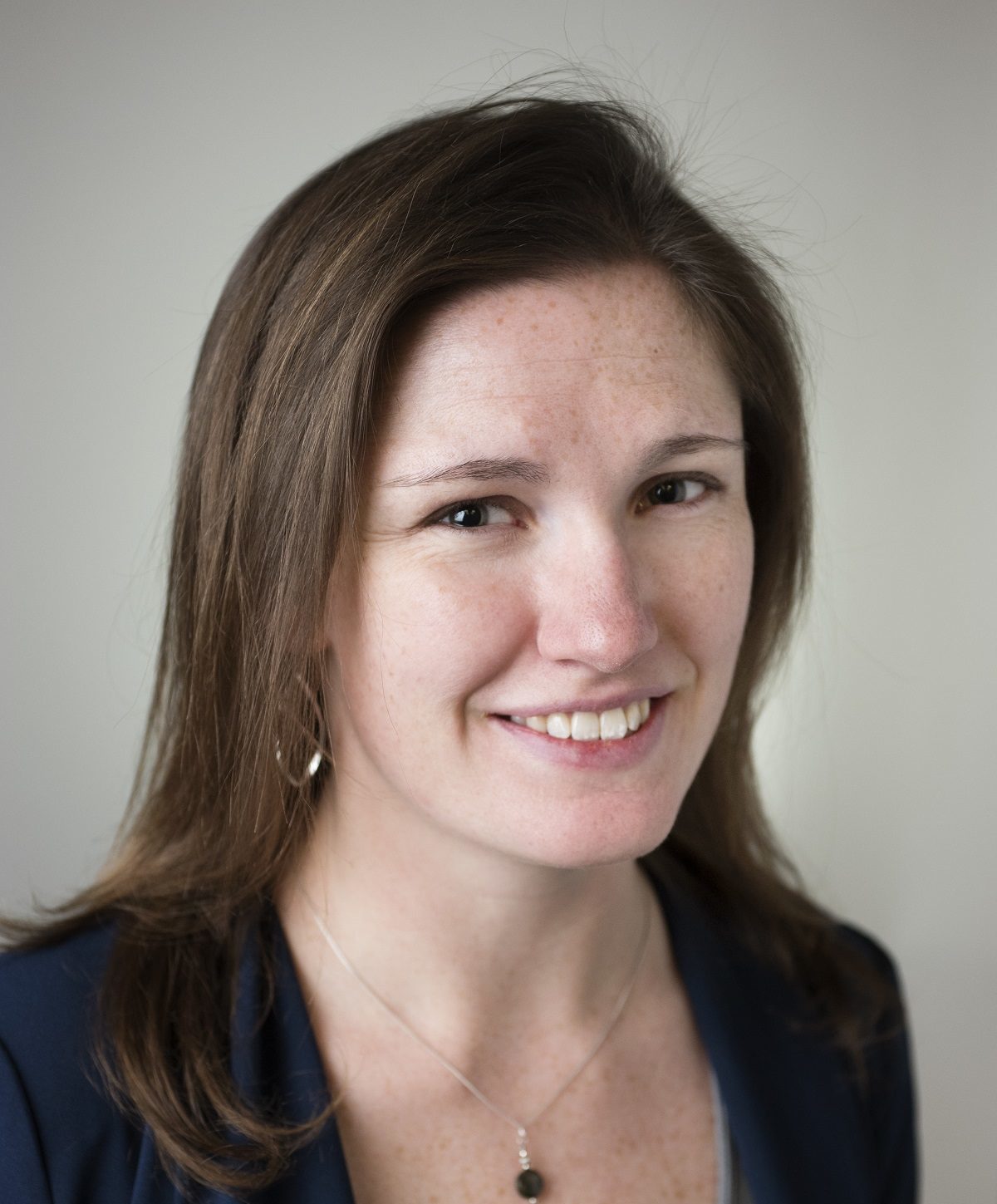
Rebecca Caldwell

Rebecca Caldwell is a research geoscientist in the Chevron Technical Center, Chevron Corp. Her work focuses on developing and applying advanced technologies and methods to solve exploration and reservoir management needs. Her areas of expertise include sedimentology and stratigraphy, source to sink analysis, modeling, and data science applications to earth science. Before joining Chevron, Rebecca received a Ph.D. from Indiana University developing predictive relationships for deltaic process-stratigraphy and global distribution. She also holds an M.S. in geology from Boston College, and a B.A. in geology and environmental studies from University of Pennsylvania.
Rebecca is active within GSA and the greater geoscience community. She is passionate about mentoring and serves as a mentor for GSA’s On To the Future program and GSA Connects programming. She holds the role of AAPG (American Association of Petroleum Geologists) Women’s Network Technical Program Director and co-chairs the Siliciclastic Theme of AAPG & Society of Exploration Geophysicists’ IMAGE conference. She serves on nominating and organizational committees for the Society for Sedimentary Geology and American Geophysical Union, and contributes to the scientific community through invited lectures, presentations, and publications.
Farouk El-Baz
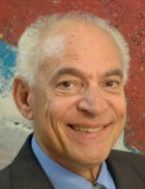
Farouk El-Baz

Farouk El-Baz is a Member of the Advisory Council of Scientists and Technologists of President Sisi of Egypt. From 1986 to 2018 he served as Research Professor and Director of the Center for Remote Sensing at Boston University.
His career began in 1958 with a B.S. in chemistry and geology from Ain Shams University and he was a TA in 1958–1960 at Asyut University, both in Egypt. He later received an M.S. in 1961 and a Ph.D. in 1964 (University of Missouri and MIT), taught mineralogy at Heidelberg University (1964–1965) and worked in Egypt’s oil industry (1966).
Starting in 1967, and for six years he participated in the Apollo program as secretary of lunar landing site selection, and chair of astronaut training in visual observations and photography. In 1973–1982 he established and directed the Center for Earth and Planetary Studies at the Smithsonian Institution, Washington, D.C., and served as Science Advisor to the late President Anwar Sadat of Egypt. He was Vice President for Science and Technology at Itek Optical Systems from 1982 until he joined Boston University in 1986.
He is the recipient of eight honorary doctoral degrees and chaired the U.S. National Committee for Geological Sciences. His awards include: Egypt’s Order of Merit–First Class, NASA’s Apollo Achievement Award, the Apollo Achievement Medal and Certificate of Contribution to Manned Space Flight, Golden Door Award of the International Institute of Boston, the Nevada Medal, Pioneer Award of Arab Thought Foundation, Human Needs Award of the American Association of Petroleum Geologists, and the Award of Public Understanding of Science and Technology of the AAAS.
He is a fellow of the Academy of Sciences for the Developing World and represents it at the United Nations. He is also a member of the U.S. National Academy of Engineering, Royal Astronomical Society, African Academy of Sciences, and the Royal Moroccan Academy of Science and Technology. He served on the boards of the Library of Alexandria (Egypt), U.S. Civilian Research and Development Foundation (CRDF), and the World Affairs Council, RAND–Qatar Policy Institute. He served as Chairman of the Charles Stark Draper Award of the U.S. National Academy of Engineering and is a member of its committee on the Grand Challenges for Engineering.
Lauren Heerschap

Lauren Heerschap

Lauren Heerschap
Owner, CEO, Sales & Marketing Director
Brunton International LLC
Lauren Heerschap is the owner and CEO of Brunton in Riverton, Wyoming. Lauren and her husband David (now COO & Lead Engineer) brought Brunton back home to U.S. ownership in late 2021 after 25 years under Scandinavian parent companies. For the first time in the brand’s 130-year history, Brunton is owned and led by a female geologist. Brunton is proud to be an Organizational Partner of GSA and to donate engraved transits for the David Lowell Field Camp Scholarships each year.
Lauren was previously the Professional Sales & Marketing Manager for Brunton and had worked alongside the brand since 2014 to launch her invention, the Axis Transit. The Axis idea was formed while teaching field geology at Fort Lewis College in Durango, CO where Lauren was Lab Coordinator then Instructor from 2007–2016. While juggling departmental responsibilities and teaching a variety of introductory, field, and GIS courses, Lauren came up with the idea for an entirely new method of taking geological measurements with a twist on the traditional Brunton transit model. Her husband, David, was also a full-time educator at the time, but he managed to help successfully prototype the new transit in their garage over a winter break. They patented the idea then approached Brunton with it, and they worked out a licensing agreement with Brunton’s previous management. After repeated trips up to Brunton’s manufacturing facility in Riverton, Wyoming, Lauren and David fell in love with the area and moved up to Lander, where they now reside and are raising their daughter, Hannah.
Lauren received a B.S. in geology from Wheaton College in Illinois, where she studied abroad in Israel for a semester, completed an 8-week geology field camp in the Black Hills of South Dakota, and spent two months on a geoarchaeology project in the Sinai Peninsula of Egypt shortly after graduation. She then received a M.S. in geology from the University of Colorado at Boulder where her tectonic geomorphology field work took her to central Taiwan to investigate the relationships between erosion, mountain-building, and earthquakes. In 2002, Lauren received a GSA Graduate Research Grant which helped make her field research in Taiwan possible. She also participated in the 2003 GSA Penrose Conference in Taiwan focused on Tectonics and Climate, allowing the unique opportunity to showcase her field area to the top scientists in tectonic geomorphology. After graduate school, Lauren worked for the Colorado Geological Survey studying earthquake hazards and land use around the state. She also taught a semester of high school geology in Zermatt, Switzerland. Lauren and David then moved to Durango, CO. After a year as an unconventional oil & gas geologist, Lauren landed at Fort Lewis College—which eventually led to the invention of the Axis Transit and her ever-increasing roles with Brunton.
Lauren is also an avid rock climber, so when not studying rocks or inventing new ways to measure them in the field, she is vertically investigating cliffs, preferably those made up of the Bighorn Dolomite!
David Szymanski
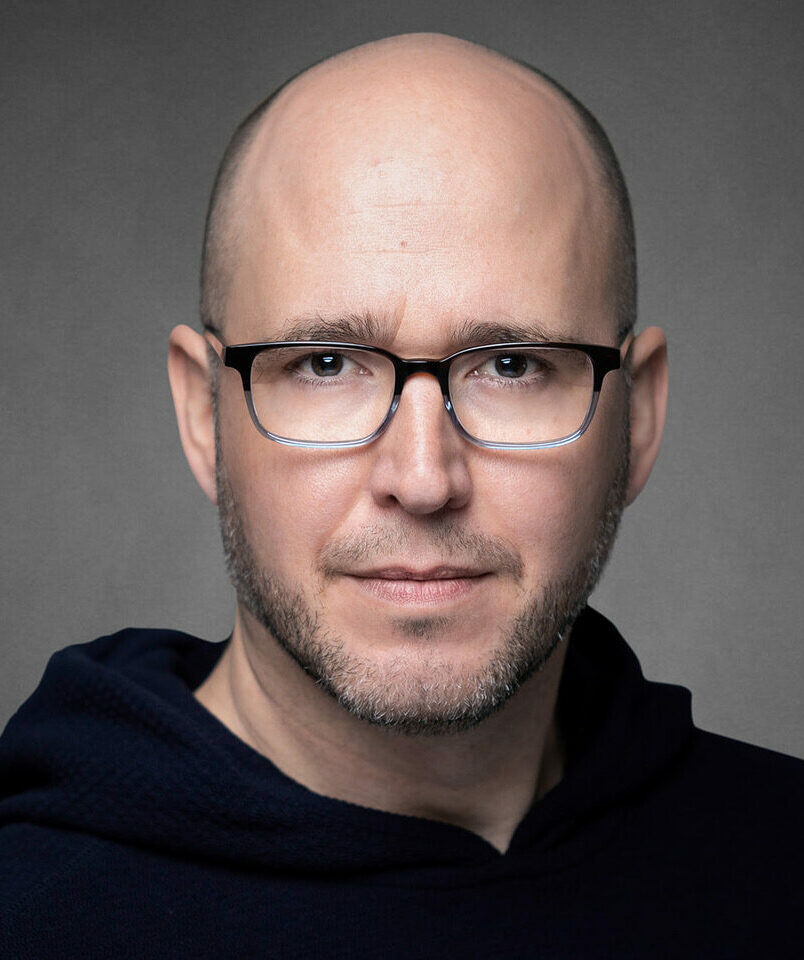
At-Large
David Szymanski
At-Large

David Szymanski, Ph.D., is an associate professor of geology and sustainability at Bentley University in Waltham, MA. He earned his doctorate in geological sciences—as well as MS degrees in geology and forensic chemistry— from Michigan State University. In addition to research interests in the cycling of elements in earth systems, Szymanski is also a forensic scientist, specializing the examination of glass as trace evidence. Before coming to Bentley, he was the 2008–2009 Geological Society of America/U.S. Geological Survey Congressional Science Fellow, working in the U.S. Senate as energy and environmental policy advisor to Sen. Jon Tester of Montana. He has served in numerous GSA leadership roles since, including terms as chair of the Geology and Public Policy Committee and Geology and Society Division. In teaching, Szymanski engages business students in research for nonpartisan policy development on issues of energy, climate change, and natural resources. As the lead investigator on the Business and Science: Integrated Curriculum for Sustainability (BASICS) project, he now conducts pedagogical research on teaching all students the complex, transdisciplinary problems of sustainability in higher education.